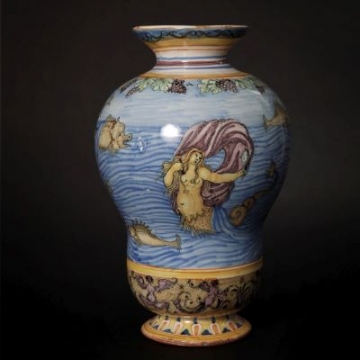Type:
Faience with a tin glaze
Dimensions:
Height: 30.5 cm
Type of acquisition:
Acquired by the Marcel Van Rooy-Elise De Smet Fund
Year of acquisition:
2022
Depository institution:
Verviers Fine Arts and Ceramics Museum (Musée des Beaux-Arts et de la Céramique)
